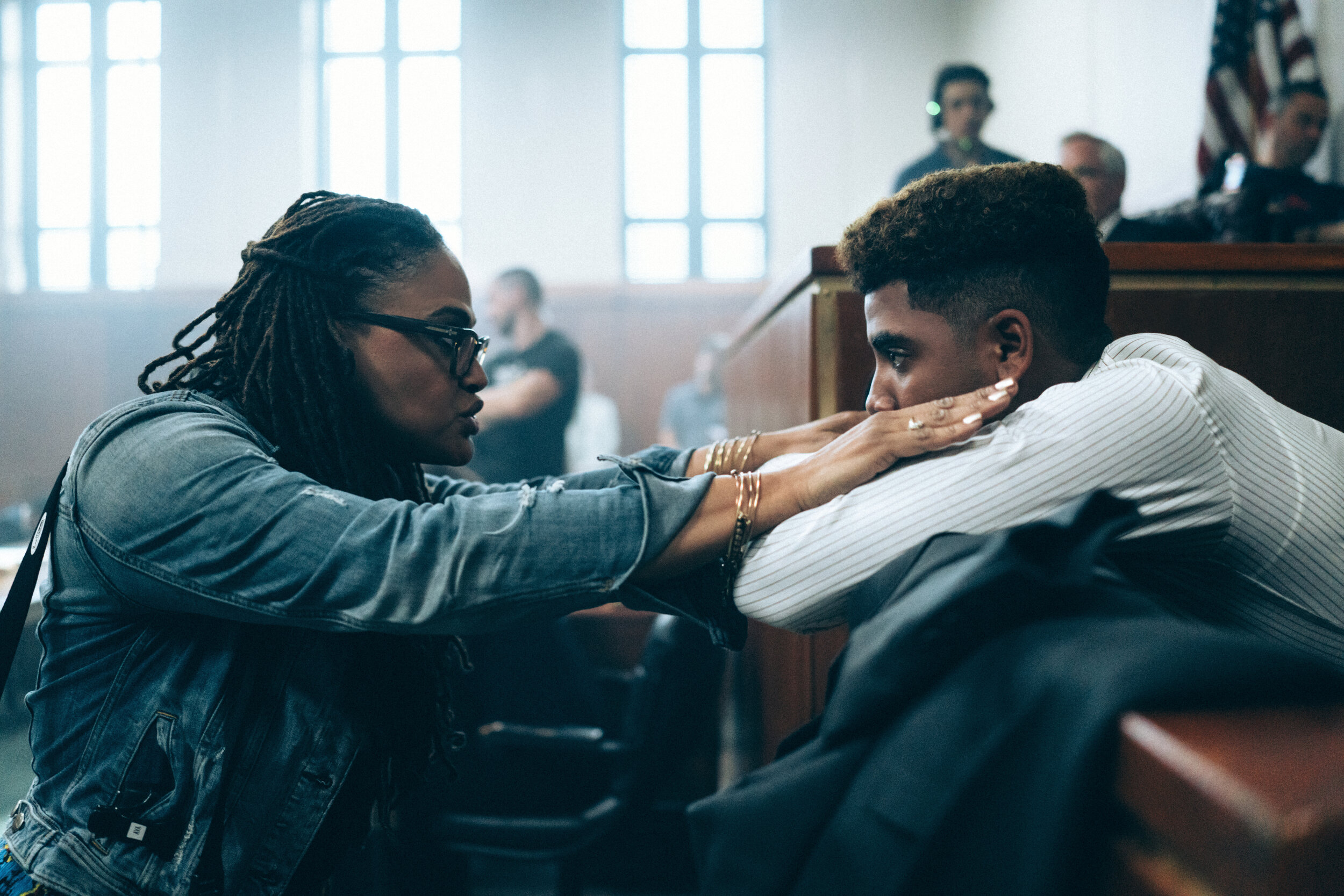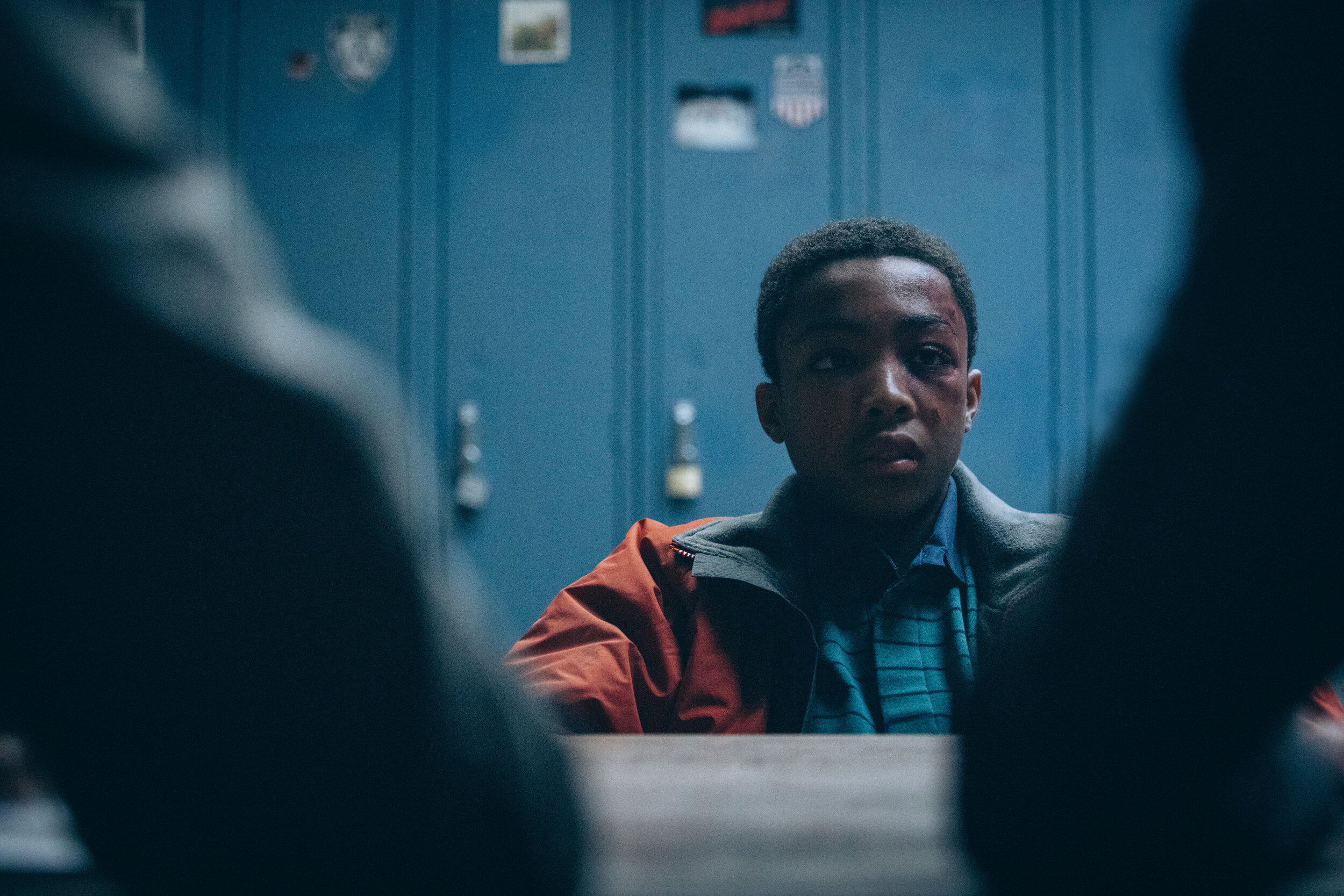
When They See Us: A Learning Companion
When They See Us:
A Learning Companion
My goal when making WHEN THEY SEE US was to create a project that could be a catalyst for conversation and change. Entertainment serves many purposes and the mission was to create something that might move us into action while challenging us to evaluate why we believe what we believe.”

WHEN THEY SEE US tells the harrowing story of New York’s Exonerated Five. A film in four parts, the series chronicles the wrongful arrest and incarceration of teenagers Antron McCray, Kevin Richardson, Yusef Salaam, Raymond Santana Jr. and Korey Wise. It explores how the five innocent teens were prejudged as guilty by a powerful criminal justice machine and examines how The Exonerated Five, their families and communities were rendered powerless against a biased criminal justice system, coercive police interrogation practices and sensationalist media coverage.
The film is a commentary on long-standing institutions and systems within the United States that were built to oppress and control citizens. These institutions and systems falsely accuse and wrongly persecute vulnerable citizens and their communities. They have created long-lasting and far-reaching implications for physical, emotional, financial and psychological safety.
In 1989, The Exonerated Five, all seventh and eighth-grade students of color from Harlem, were wrongfully arrested and incarcerated for the rape and beating of Patricia Meili, a white female jogger in Manhattan’s Central Park. This four-part series, directed by Ava DuVernay, tells the story of The Exonerated Five for the first time from the perspective of the innocent teenagers and their families.
Although no fingerprints, DNA nor other physical evidence ever confirmed the teenagers were guilty of the brutal crime, all five were sentenced to between five and 15 years in prison and juvenile detention centers. As The Exonerated Five have described in their civil lawsuit, the city’s detectives coerced them into giving false confessions and statements. In 2002 — 13 years after the crime — DNA evidence and a confession from the lone attacker, Matias Reyes, proved their innocence.
New York City vacated the convictions of the young men, and they were all fully exonerated. In 2014, The Exonerated Five settled with the city for an unprecedented $41 million.
Using this companion
This learning companion has been developed to deepen the conversation and inspire personal action after viewing the limited drama series WHEN THEY SEE US.
Each section of the companion contains:
- Episodic Themes
- Episode Recap
- Objectives and Key Points
- Essential Questions
- Classroom Activities
- Resources for Self-Reflection and Deeper Learning
- Explore systemic injustice
- Reflect on individual, institutional and systemic practices
- Take action to change themselves, institutions and systems
And for everyone who says it’s ‘hard to watch,’ think about the people who still find it ‘hard to live.’”
Using this companion
This learning companion has been developed to deepen the conversation and inspire personal action after viewing the limited drama series WHEN THEY SEE US.
Each section of the companion contains:
- Episodic Themes
- Episode Recap
- Objectives and Key Points
- Essential Questions
- Classroom Activities
- Resources for Self-Reflection and Deeper Learning
- Explore systemic injustice
- Reflect on individual, institutional and systemic practices
- Take action to change themselves, institutions and systems
And for everyone who says it’s ‘hard to watch,’ think about the people who still find it ‘hard to live.’”
Each episode of WHEN THEY SEE US presents an in-depth view of the stories of the five teens from their point of view.
In telling the story from the point of view of The Exonerated Five, WHEN THEY SEE US dramatizes events as recalled by the Five and alleged in their federal civil rights lawsuit against the City of New York and New York law enforcement authorities. Notwithstanding the allegations and settlement of that lawsuit, some of the authorities continue to deny that the confessions were coerced.
The episodes highlight the devastating effects of wrongful incarceration and underscore the unjust systems and structures that make such overt brutality in America possible.
Rights, Power and Humanity
Criminalization and Inequity
Positionality and Humanity
Criminalization and Justice
When They See Us has been called “painful” to watch. It is.
The unfortunate story of The Exonerated Five is not an anomaly. Their story is our story — one of many similar stories in the history of black and brown people in the United States of America. We know that some users may not watch each episode in order, or even each episode. This choice could be due to time constraints and interest. It also could be the trauma — or relived trauma — brought on by watching the series. Because of this, we have included additional resources aligned with the themes of the series in the Appendices. They offer participants alternative materials to read or view, while still participating in the goals of exploring, reflecting and taking action. We hope the stories of The Exonerated Five inspire participants to do the work necessary to make “liberty and justice for all” true for everyone.

